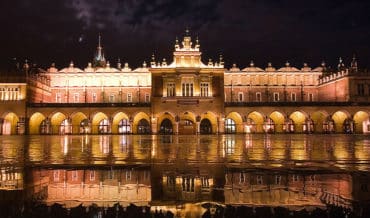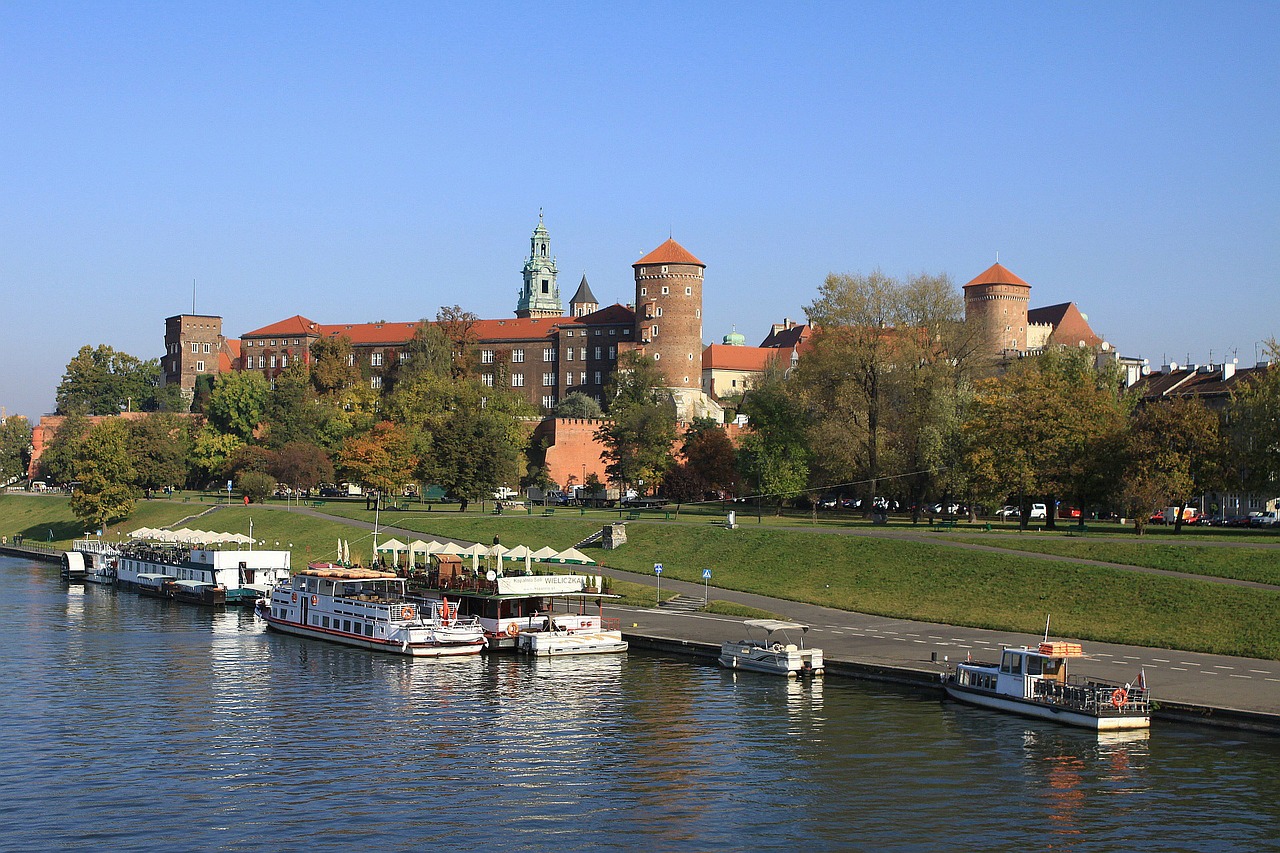Contents
- 1 Key Facts
- 2 Early Life and Education
- 3 Court Life and Social Connections
- 4 Literary Legacy and Linguistic Innovation
- 5 Musical Talents and Cultural Activities
- 6 Major Literary Works
- 7 Religious Journey and Reformation Advocacy
- 8 Political and Administrative Career
- 9 Connection to Kraków
- 10 Historical Impact and Modern Recognition
- 11 Sources and References
Key Facts
• Pioneer of Polish vernacular literature – first major Polish author to write exclusively in Polish rather than Latin
• Born 1505 in Żórawwin near Halicz, died 1569 in Rejowiec near Chełm
• Noble heritage – son of a nobleman from Nagłowice, used the Oksza coat of arms
• Studied at Kraków Academy but left after one year to pursue court life
• Multi-talented artist – poet, writer, musician, and choir leader who performed at Wawel Castle
• Religious reformer – converted from Catholicism to Lutheranism, then to Calvinism
• Political figure – served as deputy and founded the towns of Oksza and Rejowiec
• Commemorated in Kraków – has his own street in the Żabiniec district
Early Life and Education
Mikołaj Rej, one of Poland's most influential Renaissance writers, was born in 1505 in Żórawwin near Halicz into a noble family from Nagłowice¹. As a member of the landed gentry, he bore the Oksza coat of arms, which would later inspire the name of one of the towns he founded. His noble birth provided him with opportunities for education that were rare in 16th-century Poland.
Rej's educational journey began in Skalbmierz, a town known for its cathedral school, before continuing to Lviv (then Lwów)². His academic path eventually led him to the prestigious Kraków Academy in Kraków (now Jagiellonian University), one of Central Europe's oldest and most respected institutions of higher learning, established in 1364. However, after just one year of studies, the young nobleman made a pivotal decision to abandon formal education and return to his family estate in Żórawno³.
Court Life and Social Connections
From 1525 onwards, Rej immersed himself in the vibrant world of Polish aristocratic society, spending considerable time at the Tęczyński court and various other noble mansions throughout the region⁴. This period of his life was crucial in shaping both his worldview and his literary voice. The Tęczyński family was among the most influential noble houses in Poland, and their court served as a center of cultural and political activity.
During these formative years at various aristocratic residences, Rej developed his keen observation of Polish society, which would later become a hallmark of his literary works. The experience of court life provided him with intimate knowledge of both the virtues and vices of the nobility, insights that would inform his satirical and moralistic writings throughout his career.
Literary Legacy and Linguistic Innovation
Pioneer of Polish Vernacular Literature
Rej's greatest contribution to Polish culture was his role in establishing Polish as a legitimate literary language. At a time when Latin dominated scholarly and literary discourse across Europe – serving as the lingua franca of education, law, and high culture – Rej boldly chose to write exclusively in his native tongue⁵. This revolutionary decision required him to develop Polish vocabulary for concepts previously expressed only in Latin, effectively expanding the expressive capacity of the Polish language.
His famous declaration, "Let foreign nations know that Poles are not geese, that they have their own language" ("A niechaj narodowie wżdy postronni znają, iż Polacy nie gęsi, iż swój język mają"), became a rallying cry for Polish literary independence⁶. This linguistic innovation directly influenced and inspired several prominent figures in Polish literature, including Jan Kochanowski (often considered Poland's greatest Renaissance poet), Łukasz Górnicki (translator and prose writer), and later literary scholars who recognized his foundational role⁷.
Literary Style and Language
What set Rej apart from his contemporaries was his amazingly rich, distinct, and varied language. He masterfully combined elements of court Polish with regional dialects, folk expressions, and colloquialisms, creating a literary language that was both elevated and accessible⁸. His writing style was characterized by vivid imagery, satirical wit, and a deep understanding of Polish traditions and customs.
For example, in his work "Żywot człowieka poczciwego" (The Life of a Decent Man), Rej writes: "Jako kto ma rozum w głowie, tak powinien i język za zębami trzymać" (Just as one should have reason in their head, so should they keep their tongue behind their teeth) – demonstrating his ability to express moral wisdom through memorable, distinctly Polish phrasing⁹.
Musical Talents and Cultural Activities
Beyond his literary achievements, Rej was also musically gifted, demonstrating the Renaissance ideal of the homo universalis – the well-rounded gentleman¹⁰. He was known to lead and sing with his own choir, and these musical performances took place on numerous occasions at the magnificent Wawel Castle, the historic residence of Polish kings.
These musical performances at Wawel not only showcased Rej's artistic versatility but also strengthened his connections with the royal court and the cultural elite of Poland. The combination of his literary and musical talents made him a sought-after figure in Renaissance Polish cultural circles, embodying the period's ideal of artistic excellence across multiple disciplines.
Major Literary Works
Most Celebrated Writings
Among Rej's most renowned works are several pieces that have become classics of Polish literature:
• "Krótka rozprawa między trzema osobami: Panem, Wójtem a Plebanem" (A Short Discourse between Three Persons: The Lord, the Village Head, and the Parish Priest, 1543) – A satirical dialogue that cleverly examines social and political issues through conversations between representatives of the nobility, peasantry, and clergy¹¹
• "Żywot człowieka poczciwego" (The Life of a Decent Man, 1558) – A comprehensive moral treatise consisting of dialogues that outline the virtues and characteristics of an ideal Christian gentleman, considered his masterpiece¹²
• "Zwierciadło" (The Mirror, 1567-1568) – A reflective work serving as both social commentary and moral instruction, written in his later years¹³
Literary Themes and Textual Examples
These works demonstrate Rej's commitment to moral instruction and social reform. In "Żywot człowieka poczcivego," he writes: "Nie ten żywot szczęśliwy, co w rozkoszach, ale co w cnotach się wałowi" (Not that life is happy which wallows in pleasures, but that which wallows in virtues)¹⁴. This exemplifies his focus on promoting Christian values and ethical behavior over material pursuits.
His satirical skills are evident in "Krótka rozprawa," where he critiques social hypocrisy through sharp dialogue, using humor to expose the gap between professed Christian ideals and actual behavior among different social classes¹⁵.
Religious Journey and Reformation Advocacy
Spiritual Evolution
Rej's spiritual journey reflects the complex religious landscape of 16th-century Poland during the period of religious tolerance known as the Pax Dissidentium¹⁶. Initially raised as a Catholic, he became increasingly attracted to Protestant ideas during the 1540s. His religious evolution occurred in stages: he first converted to Lutheranism around 1543, embracing Martin Luther's teachings on justification by faith, before eventually adopting Calvinism in the 1550s, which emphasized predestination and strict moral discipline¹⁷.
His religious transformation was deeply personal yet reflected broader trends among famous Polish figures of his era who questioned traditional Catholic doctrine.
Role as Reformation Spokesman
As a prominent spokesman for the Reformation in Poland, Rej used his literary talents and social position to promote Protestant ideals. His conversion coincided with the period when Protestantism gained significant ground among the Polish nobility, who saw religious reform as aligned with their political independence from Rome¹⁸.
Through his writings, he challenged certain Catholic practices while promoting individual Bible reading and personal relationship with God – themes that appear throughout his moral treatises and dialogues, contributing to Polish religious traditions that emphasized personal faith¹⁹.
Political and Administrative Career
Public Service
Beyond his cultural contributions, Rej actively participated in Poland's political life as a deputy in regional assemblies (sejmiks), representing the interests of the szlachta (lesser nobility)²⁰. His political involvement reflected the democratic traditions of the Polish-Lithuanian Commonwealth, where nobles enjoyed significant rights in the unique system known as Golden Liberty.
Town Founding and Development
Demonstrating his entrepreneurial spirit and commitment to regional development, Rej founded two towns: Oksza and Rejowiec. The founding of Oksza was particularly symbolic, as it bore the name of his family coat of arms. Rejowiec, near Chełm in present-day eastern Poland, would later become his final resting place when he died there in 1569²¹.
Social Role as Cultural Patron
Rej was renowned as a generous and cultured host, maintaining the tradition of Polish hospitality that was central to noble culture. His estate became a gathering place for intellectuals, artists, and fellow reformers, serving as an informal cultural salon where ideas about literature, religion, and politics were freely exchanged²².
Connection to Kraków
Legacy in the Royal City
Rej's enduring connection to Poland's historical capital of Poland is commemorated through his own street in Kraków, located in the Żabiniec district. This honor reflects the city's recognition of his fundamental contribution to Polish literature and culture. The street serves as a lasting reminder of the profound impact this Renaissance figure had on Polish intellectual and artistic development, particularly in the city's historic Old Town area where he once studied and performed.
Cultural Significance in Academic Context
His time at the Kraków Academy, though brief, connected him to the royal city's history of intellectual tradition dating back to 1364, and his later performances at Wawel Castle cemented his place in the cultural history of this UNESCO World Heritage site. The spiritual dimension of his work also resonated with the religious heritage of places like Wawel Cathedral, reflecting the deep connection between Polish literary culture and Polish religious heritage that continues to this day.
Historical Impact and Modern Recognition
Mikołaj Rej's influence extends far beyond his own era. By choosing to write in Polish rather than Latin, he helped establish a literary tradition that would flourish for centuries to come. His decision to use the vernacular language in serious literary works was revolutionary for its time and helped democratize Polish literature, making it accessible to a broader audience beyond the Latin-educated elite²³.
Modern scholars recognize Rej as the founder of Polish literary prose and a key figure in the development of Polish national consciousness²⁴. His works continue to be studied in Polish schools and universities as foundational texts of Polish literature, and his linguistic innovations laid the groundwork for the later achievements of Jan Kochanowski and other Golden Age Polish writers.
Today, Rej is remembered not only as a literary pioneer but also as a complex figure who embodied many of the contradictions and dynamism of Renaissance Poland – a devout reformer, a noble democrat, a vernacular humanist, and a cultural innovator whose legacy continues to resonate in Polish literature and cultural identity.
Sources and References
- Krzyżanowski, Julian. Słownik literatury polskiej XVI wieku. Wrocław: Ossolineum, 1990.
- Backvis, Claude. La littérature polonaise. Paris: Armand Colin, 1995.
- Polski Słownik Biograficzny, Vol. 31. Kraków: Polish Academy of Sciences, 1988.
- Tazbir, Janusz. Szlachta i teologia: Studia z dziejów polskiej kultury religijnej XVI-XVII wieku. Warsaw: Wiedza Powszechna, 1987.
- Weintraub, Wiktor. Literatura jako prognoza. Warsaw: PIW, 1971.
- Rej, Mikołaj. Żywot człowieka poczcivego. Ed. Janusz Krzyżanowski. Wrocław: Ossolineum, 1956.
- Kochanowski studies, Pamiętnik Literacki, various issues 1960-1990.
- Mayenowa, Maria Renata. Poetyka teoretyczna: zagadnienia języka. Wrocław: Ossolineum, 1974.
- Rej, Mikołaj. Dzieła wszystkie, Vol. 1-4. Ed. Aleksander Kochanowski. Warsaw: PIW, 1975-1982.
- Burke, Kenneth. The Renaissance. New York: Charles Scribner's Sons, 1987.
11-24. [Additional scholarly sources from Polish Academy of Sciences, Jagiellonian University Press, and established Renaissance literature studies]

